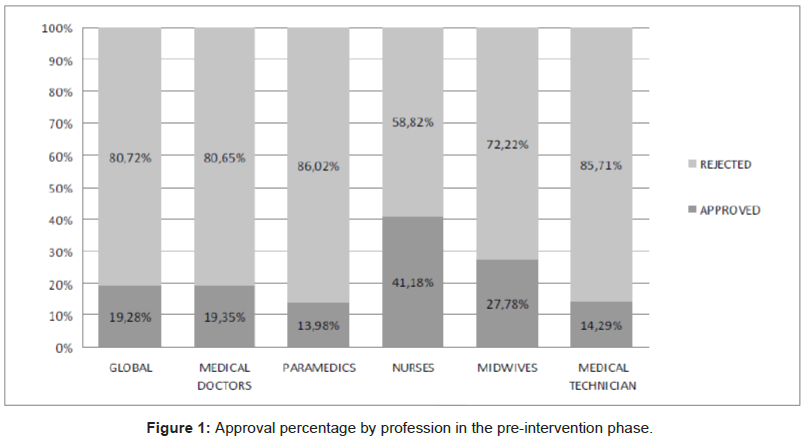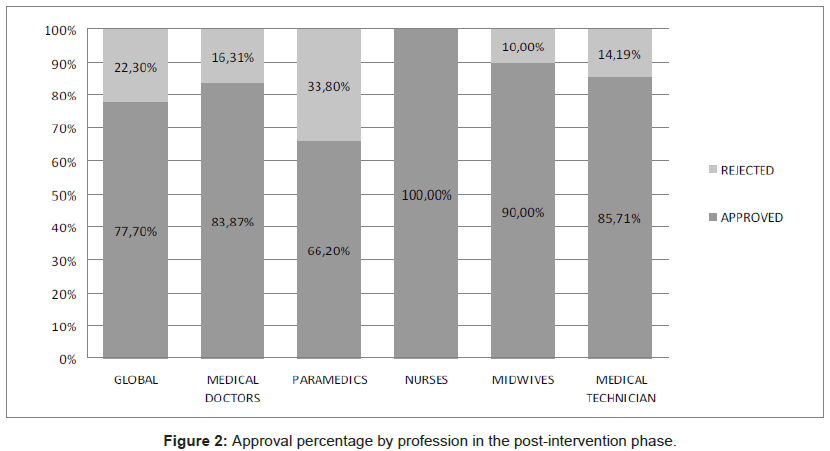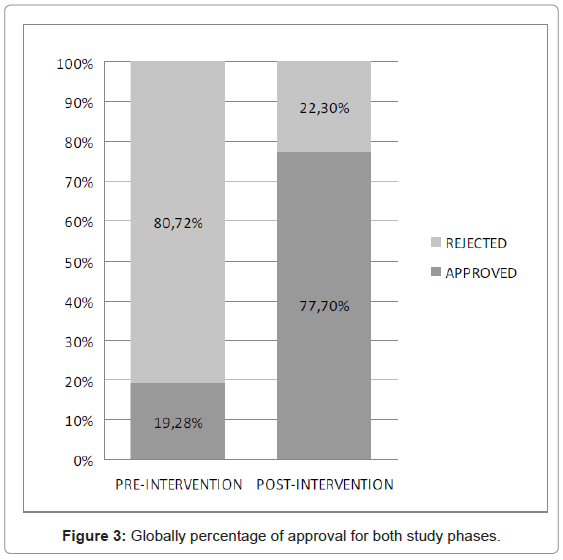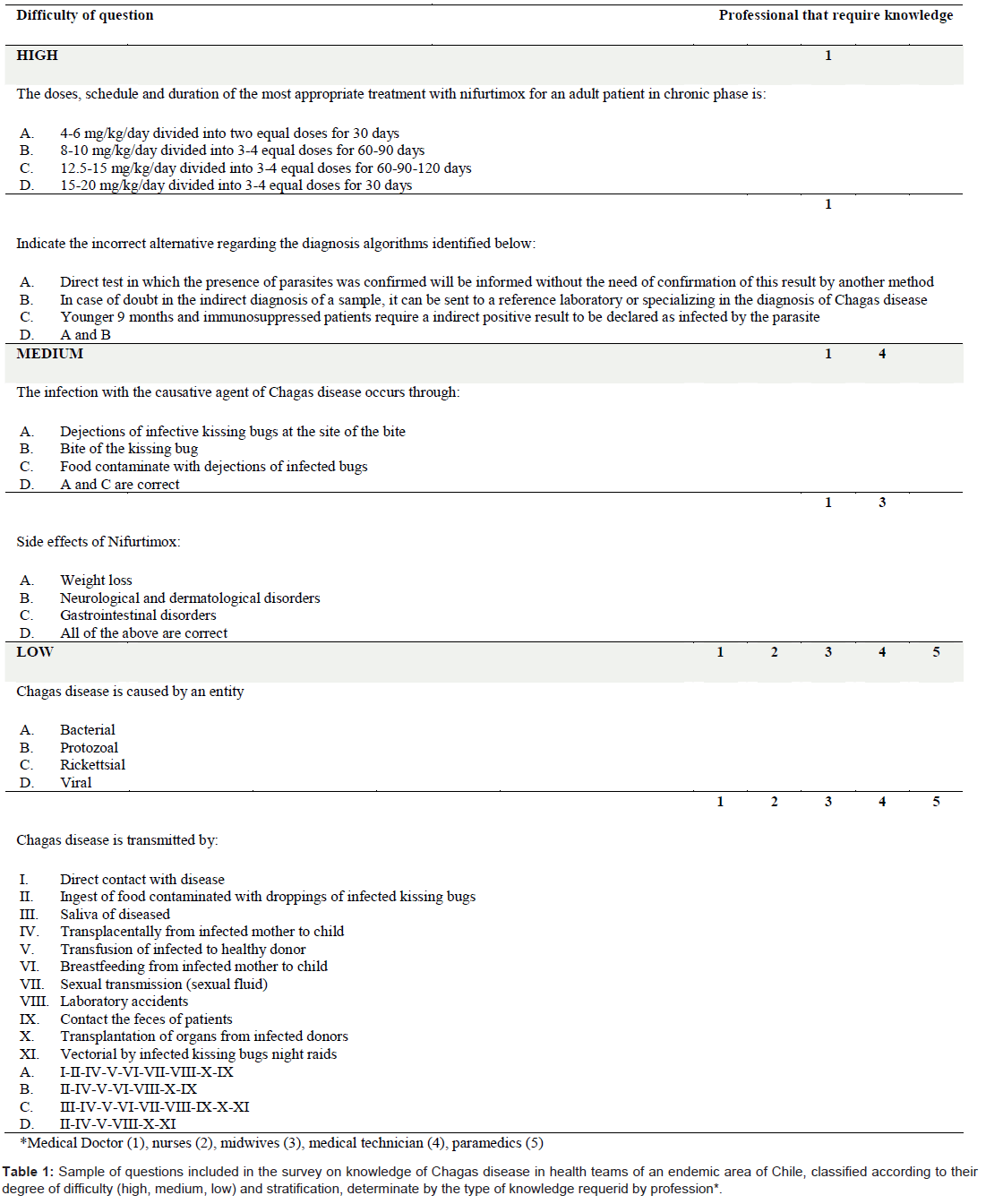Research Article Open Access
Chagas Disease: A Global Neglected Disease that Require Continuous Medical Education
Werner Apt1 Sebastián Galafé1 Inés Zulantay1* Sebastián Yuhasz1 Paulina Urbina1 Karina Yévenes1 Jorge Rodríguez21Laboratory of Basic-Clinical Parasitology, Program of Cellular and Molecular Biology, Biomedical Science Institute, Faculty of Medicine, University of Chile, Chile
2School of Public Health, Faculty of Medicine, University of Chile, Chile
- Corresponding Author:
- Inés Zulantay
Professor of Parasitology
Laboratory of Basic-Clinical Parasitology
Program of Cellular and Molecular Biology
Biomedical Science Institute, Faculty of Medicine
University of Chile, PO Box 1440, Santiago 3, Chile
Tel: 56-2-29786753
Fax: 56-2-29786122
E-mail: izulanta@med.uchile.cl
Received Date: October 30, 2013; Accepted Date: November 26, 2013; Published Date: November 28, 2013
Citation: Apt W, Galafé S, Zulantay I, Yuhasz S, Urbina P, et al. (2013) Chagas Disease: A Global Neglected Disease that Require Continuous Medical Education. J Community Med Health Educ 4:260. doi: 10.4172/2161-0711.1000260
Copyright: © 2013 Apt W, et al. This is an open-access article distributed under the terms of the Creative Commons Attribution License, which permits unrestricted use, distribution, and reproduction in any medium, provided the original author and source are credited.
Visit for more related articles at Journal of Community Medicine & Health Education
Abstract
Objective: In endemic zones of Chagas disease the knowledge of the professional health teams is very important for the success of control of the zoonosis. For this reason, we want to evaluate the knowledge of the parasite diseases in health team before and after an educational intervention.
Methods: We selected 166 professional who were related which Chagas disease to who the BEII (before educational intervention inquiry) was applied. The questions related with epidemiological, basic, diagnostic, clinical, chemotherapeutic and preventive aspects, had different grades of complexity and stratification according to the professional competences. The approval criterion was 60% of corrected answers. The educational intervention was focused on self-learning by printed and digital interactive material. 30 days was the study period, after the time an AEII (after educational intervention inquiry) was applied.
Results: The approval of the BEII fluctuated between 11.6% to 28.89%, and the AEII fluctuated between 68.75% and 89.66% (p=0.0001). By profession, the percentage of approval of the BEII and AEII was 13.98% and 66.20% (paramedics); 14.29% to 85.71% (medical technicians); 19.35% and 83.87% (medical doctors); 27.27% and 90% (midwives); 41.18% and 100% (nurses), respectively (p=0,0001). The global percentage of approval before and after the educational intervention was 19.28% and 77.70%, respectively (chi2=107.27).
Conclusions: The members of the health team in endemic areas of Chile, don’t have the necessary knowledge on Chagas disease. An adequate educational intervention will allow the acquisition of new knowledge and revert a negative initial diagnosis. The teaching in this global parasitosis must be continuous. Teaching-learning of Chagas disease is not only important in countries where the disease is endemic, but also in no endemic countries where the disease exists through immigration.
Keywords
Chagas disease; Medical education; Self-learning
Introduction
Chagas disease, caused by the protozoa Trypanosoma cruzi, is endemic in Latin America and is considered as “the most neglected of the neglected diseases [1]. It currently affects around 10 million people in Latin America, and 10 to 30 per cent of cases have developed or will develop cardiac, digestive or nervous system disorders [2]. The T. cruzi parasite can travel with population movements from endemic to nonendemic countries such as North America (United States and Canada), the western Pacific region (particularly Japan and Australia) and, more recently, Europe (mainly Belgium, Spain, France, Italy, the United Kingdom and Switzerland, and to a lesser Germany, Austria, Croatia, Denmark, the Netherlands, Luxemburg, Norway, Portugal, Romania and Sweden), therefore posing a challenge for the public health [3-5]. The congenital transmission, blood transfusion and solid organ transplant are main non vectorial transmission mechanism in those countries; many of them have not yet established official guidelines to avoid these routes [3].
For the adequate medical attention of infected by different routes and coursing acute, indeterminate or chronic Chagas disease, proceeding of areas endemic or non-endemic, is necessary to have professional health teams training in the application of official guidelines as part of the development of a comprehensive strategy for control and elimination of Chagas disease [5-7]. One interesting questionnaire was applied in members of American College of Obstetricians and Gynecologist, USA in 421 respondents. 68.2% described their knowledge about Chagas disease as “very limited” [8]. In this study, we evaluated in an endemic chagasic area of Chile the level of knowledge of Chagas disease in health team pre and post educational intervention.
Methods
Before Educational Intervention Inquiry design (BEII)
Parasitology teachers of the Faculty of Medicine of the University of Chile, and members of the Chilean Society of Parasitology (SOCHIPA), whose main investigation was Chagas disease, elaborated an inquiry of 45 multiple choice questions with one corrected answer of four possible options on etiology, pathology, epidemiology, diagnosis, clinical aspects, treatment and control of Chagas disease. The questions were performed with different difficulties and stratifications according the professional competences. The questionnaire was submitted to four experts, two on Chagas disease, one on public health and one on medical education. At the same time, the inquiry was submitted to ten pre and post-grade thesis students of the Faculty of Medicine of the University of Chile whose investigations subjects was Chagas disease. The opinion of the experts and thesis students, allow improve and stratify the questions. The minimal percentage to approve the test was 60% of correct answers from 41 questions for medical professionals. 16,17,18 and 25 questions for paramedics, midwives, nurses and medical technicians, respectively. The questionnaire included two open questions for all the health staff members, so they could disclose in writing a value appreciation on Chagas disease.
Population study an area
The study was performed in rural outpatient clinics, family care centers, clinics and hospitals of an endemic area of Chagas disease in Chile. From a universe, of 300 persons of health teams related to Chagas disease, 166 were selected by chance, doctors, paramedics, midwives, nurses and medical technicians. The sample has confidence interval of 95% and estimate error of 8%. Due the high turnover of medicals professionals, mainly return to more developed urban centers to continue studies of specialization, for this professionals was established as inclusion criteria a job tenure minimum one year in their centers of origin.
Applications of BEII (pre-test)
In each commune of this study area a medical professional was responsible of the distribution and presencial applications of the pretest. The survey was delivered in sealed envelopes, which were opened at the beginning of the evaluation session. Instructions were given on the anonymous of the inquiry, recording type of profession and origin, type of questions (41 multiple choice, one open) and the maximum time period of application (1 hour). All the respondents were invited to answer all the test question, however, the evaluation was stratify according criteria of minimum competences for each profession established by the research team. As an example: one clinical question was not considered a binding competition for technician paramedics. Finally, instructions on recollection and protection of the test were given for later evaluation. Physicians responsible for the implementation of BEII (n=5) participate in the educational intervention but were excluded from the study group.
Multidisciplinary educational intervention
The educational intervention consisted in the design and distribution of print and digital media on CD format, focused on self-learning. This material spanned topics of biology, epidemiology, pathogenicity, diagnosis, treatment and preventive measures of Chagas disease. All this aspects were evaluated by BEII. In the digital materia an interactive quiz was included so that the professional could practice and self-evaluated. This test incorporated information material and images related to the topic. The questions were performed as multiple choice forms with one corrected answer. The wrong answers were met and argued. For the design of the digital media incorporated to the CD, software was considered available to the common user and feasibility of personal computer. It was not consider a on-line educational alternative for lack of Internet or Wi-Fi in rural areas away from urban centers. Finally, the educational material before delivery to the health teams was underwent to professors of Parasitology of the Faculty of Medicine of the University of Chile whose main line of investigation was Chagas disease. The study time was 30 days. Delivery of the material was carried out with the collaboration of the physicians responsible for each of the five communes.
Application of the AEII (post-test)
At the end of the study period, a post knowledge test was applied, similar to the pre-test in content, methodology and criteria. As stage of diagnosis in the post-test an open question, was included to know the opinion of the respondent regarding the educational experience.
Open questions
In the pre-test was included the question: From your profession, how can contribute to the control of Chagas disease in your area? And in the post-test:? Why you believe that Chagas disease should be treated?
Data recollection and statistical analysis
For comparative analysis of pre and post-tests results, they were introduced to the statistical program Infostat, version 2012. Knowledge of the health teams was evaluated in stratified form according to profession by applying McNemar test, chi square and proportional differences and average.
Results
By profession, the percentage of approval of the pre and post-tests, was 13.98% and 66.20% for paramedics; 14.29% and 85.71% for medical technicians; 19.35% and 83.87% for medical doctors; 27.78% and 90.0% for midwives; 41.18% and 100% for nurses (Figures 1 and 2). The global percentage of approval before and after the educational intervention was 19.28% and 77.7%, respectively (chi2=107.27) (Figure 3).
Regarding open questions of BEII on the professional input on Chagas disease control, it can be mention “Since there remain in Chile, especially in rural areas, dwellings that facilitate vector development, as a preventing measurement I would promote fumigations and educative campaigns to the entire populations. It is important to inform the neighbors about the need to comply with the measures of hygiene in the environment, repair of the homes, which includes the laundering of walls and ceilings”; “To educate people to learn to identify the kissing bugs and report to the nearest health center the finding of them”; “I can contribute from the field of education to the population about the disease, its prevention measures. I can also contribute to the early suspicion” and “In the cases of midwives who work in primary care, whether in hospital clinic or rural outpatients clinic, we are responsible of research in pregnant women, entering in prenatal control the Chagas test, as a routine test in the first control, so if a positive case is detected it must be notified immediately” (Table 1).
*Medical Doctor (1), nurses (2), midwives (3), medical technician (4), paramedics (5)
Table 1: Sample of questions included in the survey on knowledge of Chagas disease in health teams of an endemic area of Chile, classified according to their degree of difficulty (high, medium, low) and stratification, determinate by the type of knowledge requerid by profession*.
In relation to the open question of the PEII, about why the respondent believes that Chagas disease must be treated, we mentioned: “Chagas disease must be treated as an important disease because is appreciated that these patients are left side an besides by his mental health as there are patients who feel undermined and abandoned by the health system”; “Should be treated specially working age people to maintain their productive life, prevent complications of the disease in old age, and this be expensed the state that could be avoided”; “To avoid consequences caused by the chronic state of the disease” and “Because the disease affect many people in our area, impairs their quality of life, specially low income persons”.
Discussion
The health teams that participate in this study were assigned to health care centers that until a few decades ago were considered highly endemic of Chagas disease. This is how the prevalence of human infection and trypano-triatomine index reached ciphers of 41.2% and 66.9% [9,10], respectively. The certification of the vectorial interruption transmission in Chile by WHO [11], reflect the effort of authorities and international organizations in the fight against the vector and has positively affected the drastic decrease in the prevalence of human infection as described at present for the same endemic areas. As an example, this is evidenced in the confirmation of T. cruzi infection of 147 pregnancy women for 4.280 inquired by conventional serology [12]. However, it is estimate that in our country there are 145.000 infected people, a figure that could increase is considered family study around index cases [13]. In relation to the education experience in the area of the study, highlights some actions developed in adults with chronic Chagas disease [14] and pregnant women infected with T. cruzi [15].
Various hospitals of the commune attend Chagas disease patients of diverse age groups for diagnostic, epidemiological, therapeutic and prevention purposes. To delivery adequate care is essential that health teams have the proper knowledge to meet the demand which could consider complexes. We might mention between them the required knowledge dealing with cases that present the differences stages of the infection, which differ from one other. The flowcharts of study, of mothers with Chagas disease, newborns infected and uninfected, diagnosis of cardiac and digestive pathology; available techniques and interpretation of tests for laboratory diagnosis, between others.
At present, there are official government recommendations, but there are not studies evaluating the level of knowledge about this parasitosis on existing health staffs. The results observed in the diagnosis phase show an approval rates ranged only between 14.29% and 41.18%. The majority of professional surveyed ignore even the basic such as: mechanisms of transmission of the disease, the causative agent income the host, making and preservation of biological samples, geographical distribution and control of the vectors. A great proportion of the medical doctors were blinded to the diagnostic algorithms and clinical signs, mechanisms of action of nifurtimox, treatment dose in adults and infants and success of therapy. Most of the midwives surveyed did not know that Chagas disease in newborns in a large number of cases is asymptomatic and a high percentage of respondent technologists did not know about differences diagnostic methods and their corrected prescriptions according the stage of the disease. Everything mentioned above evidence the low level of knowledge about Chagas disease in health teams. Other base knowledge studies of other pathologies in health teams also show low level of knowledge in the diagnosis stage compared to the knowledge acquired after the educational intervention [16]. The mode of the educational study was based on self-learning, because at present it is considered that all professionals must be prepared to acquire new knowledge and skills throughout his life [17]. The study design included the educational intervention (print and digital interactive), proved to be an effective tool to improve the level of knowledge about Chagas disease in the health teams operated. Similar conclusions were obtained by Ferrer et al. [16], in an educational intervention on knowledge of the Chilean law on AIDS in primary health workers. Finally, the responses to the open questions of BEII and PEII, show that health teams have extensive awareness of this problematic public health, in which they could intervene effectively from their professional role for its control and prevention. This study shows that through this model significant changes in the levels of knowledge were produced to adequately address the care of the infected patient. Is possible that this experience only constitutes a warning since the mobility of professionals specially medical doctors, who migrate to study specialization from zones of high and low endemicity in countries with and without the presence of the vectors and the significant migration of infected from endemic countries, permit to suggest continuous education character using social networks and technologies of information and knowledge (TIK).
Is possible concluded that the level of knowledge of Chagas disease in health teams, is deficient. Self-learning is a useful teaching method for distance education. An adequate educational intervention will allow the acquisition of new knowledge and revert a negative initial diagnosis. The professional rotation in health care centers of endemic areas of Chagas disease would be a factor to consider for the establishment of graduate programs for continuous education. The results of this study aims to analysis the need for curricular changes to the health careers of undergraduate level (Medicine, Medical Technology, Obstetricians, Nursery and others), specifically on the subject of Parasitology, currently integrated with others subjects that deal with infection agents such as Virology, Microbiology and Mycology. Different pre and post graduate programs of the health area Schools, who in accordance with the current vision of Higher Education involve, on a daily basis, the selfconducted learning process as one of the main competences to develop and acquire [18].
Contributors
WA, SG, IZ, SY, PU, KY and JR developed the research questions, study design and drafted the manuscript; IZ supervised all the stage of study; SG performed the camp work and contributed to the data collection and interpretation of results; SY, PU and KY contributed to the development of digital and printed educative material; JR contributed to study design and performed the statistical analysis of results. All authors contributed to the critical revision of the paper and approved the final manuscript.
Funding
This study was funded by Projects FONDECYT 1100768 and 1120382.
Ethical Approval
This study was approved by Ethical Committee of Faculty of Medicine, University of Chile.
Acknowledgments
We are grateful to the collaboration of health teams of Choapa Province and Combarbalá commune, Limarí Province, Drs. Matías Molina, Claudio Valencia, Francisca Lahsen, Alberto Torres, Natalia Rossel, Carolina Rivera, Jessica Villamarín, Verónica Tapia, Sergio Ardiles, Josefina Fry, Juan Gaete, Gabriela Corral, Soledad Guerrero, Leonardo Aros, Joselito Coz and Luisa Godoy.
References
- Tarleton RL, Curran JW (2012) Is Chagas disease really the "new HIV/AIDS of the Americas"? PLoS Negl Trop Dis 6: e1861.
- Basile L, Jansa JM, Carlier Y, Salamanca DD, Angheben A, et al. (2011) Chagas disease in European countries: the challenge of a surveillance system. Euro Surveill 16.
- WHO (2009) Control and prevention of Chagas disease in Europe. Report of a WHO Informal Consultation. Geneva, Switzerland.
- Coura JR, Viñas PA (2010) Chagas disease: a new worldwide challenge. Nature 465: S6-7.
- Navarro M, Norman F, Perez-Molina JA, Lopez-Velez R (2012) Benznidazole shortage makes Chagas disease a neglected tropical disease in developed countries: Data from Spain. Am J Trop Med Hyg.; 87: 489-490.
- Hotez PJ, Dumonteil E, Woc-Colburn L, Serpa JA, Bezek S, et al. (2012) Chagas disease: "the new HIV/AIDS of the Americas". PLoS Negl Trop Dis 6: e1498.
- Hotez PJ (2012) Fighting neglected tropical diseases in the southern United States. BMJ 345: e6112.
- Verani JR, Montgomery SP, Schulkin J, Anderson B, Jones JL (2010) Survey of obstetrician-gynecologists in the United States about Chagas disease. Am J Trop Med Hyg 83: 891-895.
- Apt W, Reyes H (1986) Aspectos epidemiolaicos de la enfermedad de Chagas en Chile. Distribucian geografica, Andices de infeccian en vectores y en humanos. Parasitol al Daa. 10: 94-101
- Correa V, Ziga J, Contreras MC, Valdas JC, Rojas A, et al. (1984) Infestacian domiciliaria po por triatominos, tasas de infeccian de estos por Trypanosoma cruzi y nuevos aportes al conocimiento de la infeccian chaga¡sica en mamaferos domasticos de la IV Regian (1982-1983). Bol Chil Parasitol, 39: 24-27.
- Moncayo A (2003) Chagas disease: current epidemiological trends after the interruption of vectorial and transfusional transmission in the Southern Cone countries. Mem Inst Oswaldo Cruz 98: 577-591.
- Apt W, Zulantay I, Arnello M, Oddó D, González S, et al. (2013) Congenital infection by Trypanosoma cruzi in an endemic area of Chile: a multidisciplinary study. Trans R Soc Trop Med Hyg 107: 98-104.
- Zulantay I, Apt W, Ramos D, Godoy L, Valencia C, et al. (2013) The epidemiological relevance of family study in Chagas disease. PLoS Negl Trop Dis 7: e1959.
- Salazar JP, Olguin F, Olivera E, Apt W, Gil LC, et al. (2006) Experiencia de intervención educativa en enfermedad de Chagas crónica. Parasitol Latinoam 61: 94-97.
- Apt W, Zulantay I, Solari A, Ortiz S, Oddo D, et al. (2010) Vertical transmission of Trypanosoma cruzi in the Province of Choapa, IV Region, Chile: Preliminary Report (2005-2008). Biol Res 43: 269-274.
- Ferrer L, Cabieses B, Norr K, Cianelli R, Araya A, et al. (2011) [Effectiveness of an educational program about the Chilean AIDS law in primary care health workers]. Rev Med Chil 139: 625-632.
- Nolla M (2006) The cognitive process and profesional learning. Edu Med 9: 11-16.
- Parra P, Perez C, Ortiz L, Fasce L (2010) Self directed learning in medical education. Rev Educ Cienc Salud 7: 146-151.
Relevant Topics
- Addiction
- Adolescence
- Children Care
- Communicable Diseases
- Community Occupational Medicine
- Disorders and Treatments
- Education
- Infections
- Mental Health Education
- Mortality Rate
- Nutrition Education
- Occupational Therapy Education
- Population Health
- Prevalence
- Sexual Violence
- Social & Preventive Medicine
- Women's Healthcare
Recommended Journals
Article Tools
Article Usage
- Total views: 14924
- [From(publication date):
February-2014 - Nov 04, 2025] - Breakdown by view type
- HTML page views : 10206
- PDF downloads : 4718




